We’ve taken a look back at the books reviewed for The Maine Organic Farmer & Gardener in 2022 and highlighted several of our favorites. For the full reviews, as well as other books we’ve enjoyed, visit our blog.
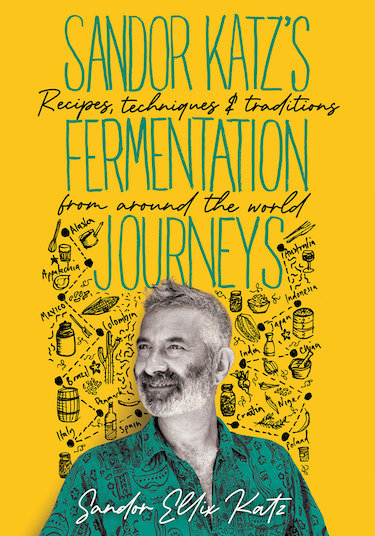
“Sandor Katz’s Fermentation Journeys: Recipes, Techniques, and Traditions from around the World” by Sandor Ellix Katz, Chelsea Green Publishing, 2021
Organized not by country but by fermentation substrates, the seven chapters cover simple sugars, vegetables, grains and starchy tubers, mold cultures, beans and seeds, milk, and meat and fish. The first stops on the journey are Niger, Burma and Indonesia to learn about palm wine (which is the ferment that started Katz’s life of learning and experimentation). Then on to Mexico for pulque, the fermented sap of maguey (Agave americana). We globe-hop fermentation traditions through 60 recipes. Each is enriched with the story of place and its people and some of the reasons for or history around the technique. The photographs drew me in, making me want to be there to help grind the corn, stir the mash, taste, ask questions and soak in a world far from my fermentation ventures. Stops include Burma for lahpet, fermented tea leaves; China for rice alcohol and dofuru, or fermented tofu; Japan for shio-koji and sake; Croatia for ajvar and whole sour cabbages; Thailand for naem, ribs fermented in salt, rice paste and garlic; Nigeria for efo riro spinach stew; and the United States for ricotta “miso.”
– Roberta Bailey
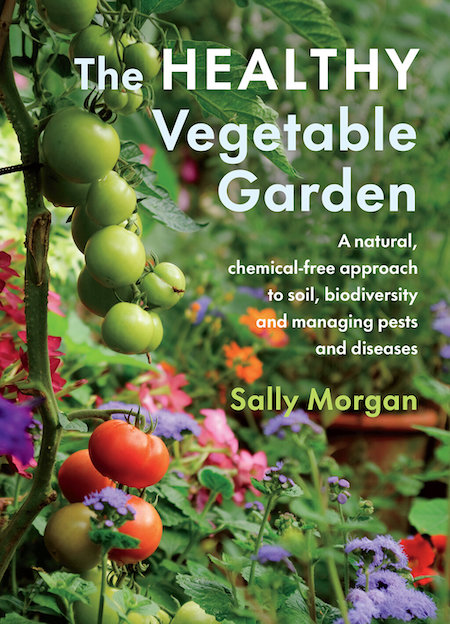
“The Healthy Vegetable Garden: A natural, chemical-free approach to soil, biodiversity and managing pests and diseases” by Sally Morgan, Chelsea Green Publishing, 2021
The secret to a healthy garden begins with the soil. “There are no short cuts,” writes Sally Morgan, who warns that it takes time to build healthy soil. But don’t worry, Morgan shows how gardeners can work with nature to build their soil, grow healthy plants and decrease the populations of pests and diseases. And she does so in a conversational tone, much like chatting with a friend over the garden fence. Fittingly, the first section begins with soil basics. Soil is, Morgan says, a mix of minerals and organic matter, air and water. But it’s also alive with fungi, bacteria, arthropods and other organisms. She discusses soil structure, pH and how to assess your soil. Then she dives into different ways of regenerating soil: no-dig gardening, composting, planting cover crops and mulching. My favorite section is where Morgan explains the value of leaf litter.
– Sue Smith-Heavenrich
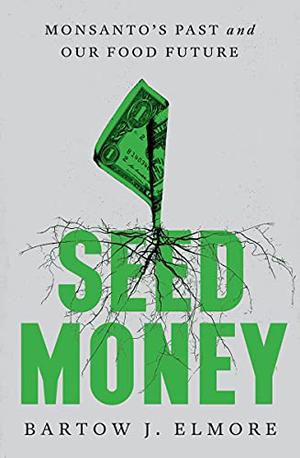
“Seed Money: Monsanto’s Past and Our Food Future” by Bartow J. Elmore, W. W. Norton, 2021
If you think you know Monsanto — the biochemical company that has become synonymous with genetically modified monoculture and toxic herbicides — think again. Bartow J. Elmore’s “Seed Money: Monsanto’s Past and Our Food Future” is a history of the corporation, its blunders and how it became the black hat of modern agriculture. Elmore’s detailed and compelling book shines light on the hidden stories in the corners of Monsanto’s past and the messy reality of its present. Through Elmore’s masterful storytelling, “Seed Money” is as much a character drama as it is a corporate exposé. Elmore details, through painstaking research, the known motivations of the key players in Monsanto’s founding that led to ethically questionable business decisions throughout the biochemical company’s many phases.
– Sam Schipani
“Foodtopia: Communities in Pursuit of Peace, Love, & Homegrown Food” by Margot Anne Kelley, David R. Godine, 2022
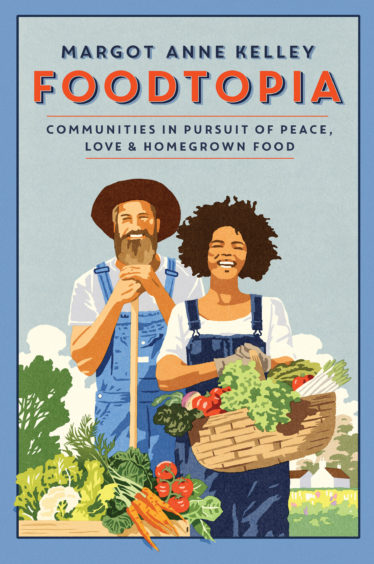
Assembled around five back-to-the-land movements from the 1840s into the 2010s and the pandemic years, “Foodtopia” is an exploration of utopian experiments that use food as a means to create a more just and equal world. Woven together with the common thread of food as a means to a better reality, Kelley presents the reader with interesting and entertaining illustrations of these movements — such as Bronson Alcott’s (father of Louisa May) Fruitlands, Henry David Thoreau’s project at Walden Pond, Scott and Helen Nearing’s honing of “the good life,” the hippies and back-to-the-landers of the 1960s and ‘70s, and the Good Food Movement and food activists of present — with numerous examples based in Maine, including the creation of MOFGA.
– Catherine Preston-Schreck
“The Healing Garden: Cultivating & Handcrafting Herbal Remedies” by Juliet Blankespoor, HarperCollins Publishers, 2022
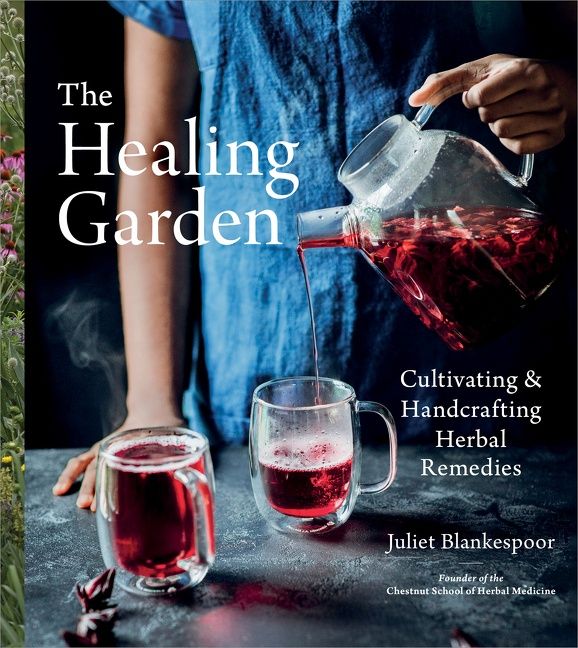
Even if you don’t plan to grow your own herbs, the medicine making section of this book makes it a worthwhile addition to any herbalist’s library. It includes photos along with directions for how to make a tincture as well as infusions, decoctions, syrups, oils, salves and poultices. Basically, Blankespoor covers everything you would want to make to build your own home apothecary. Simple yet tasty recipes are dispersed throughout: a favorite staple is an herbal immunity broth concentrate. Additional recipes range from culinary recipes, like lavender-lemon bundt cake, to more medicinal ones such as a menstrual cramp formula. If you are looking for a materia medica, you’ll find it in the botanical medicine section of the book, which includes an alphabetical list of herbs with information on how to cultivate them, medicinal properties and preparations. Dosage information (often hard to come by in herbal books) and medicinal uses are broken down by the body’s systems making for easy reference when dealing with a specific aliment. “The Healing Garden” does a spectacular job of mentioning precautions for specific plants and has four pages dedicated to herbal safety, giving great reminders for herbal practitioners and beginners alike.
– Denise DeSpirito
“Healing Grounds: Climate, Justice, and the Deep Roots of Regenerative Farming” by Liz Carlisle, Island Press, 2022
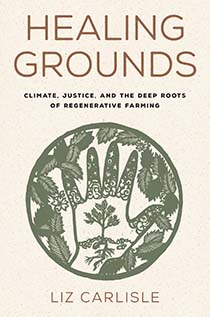
Liz Carlisle could have written a book on regenerative agriculture that extolled the virtues of intensive grazing and no-till. She could have focused on practices like cover cropping and polyculture, and how they can lead to carbon sequestration and increased soil organic matter. That was her intent, after all: “to pin down the potential for agricultural climate solutions in technical terms.” Thankfully for the reader, she ventures much deeper, positing: “Maybe we could actually make a dent in climate change if we tweaked more than just individual agricultural practices, if we reoriented the logic underpinning our entire food system.” Over the course of four chapters, “Healing Grounds” leads us into the histories and present day of Indigenous, Black, Mesoamerican and Asian American farmers. From the Blackfeet Nation and a project to reintroduce buffalo to their native grazing grounds, to Black agroforestry in North Carolina, to the immense biodiversity and a community approach to small farming in California, readers are taken on a journey that acknowledges the effect of colonization on the land, people and climate, and are shown why we can’t settle for a simplistic approach of swapping a handful of conventional farming practices for regenerative ones.
– Katie Spring
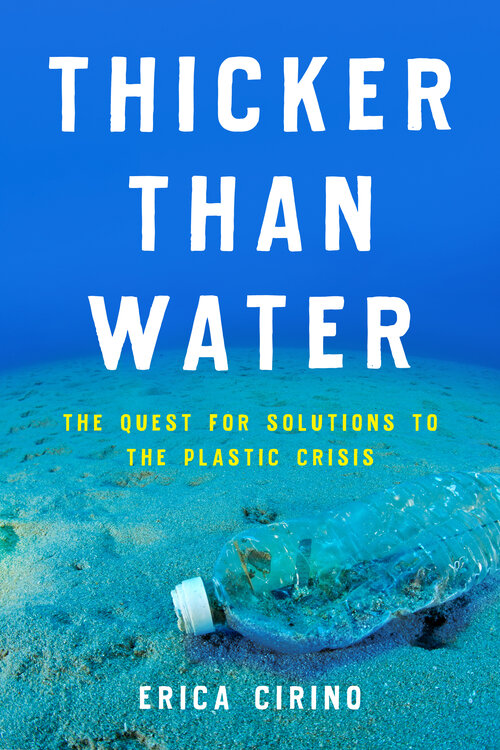
“Thicker Than Water: The Quest for Solutions to the Plastic Crisis” by Erica Cirino, Island Press, 2021
Solid municipal waste, much of which is composed of plastic, is on the rise across the globe. Estimates indicate that since the mid-1900s, humans have produced over 8.3 billion metric tons of non-recycled petrochemical-based plastic. Worse still, 76% of that plastic is believed to have been used only once or twice before being discarded. In her exhaustively researched “Thicker Than Water: The Quest for Solutions to the Plastic Crisis,” journalist Erica Cirino explores both what is contributing to the surge in use of plastics and what is at stake — for the environment and humanity. Cirino crews on a sailing vessel studying plastic pollution in the Great Pacific Garbage Patch, observes plastic particles found in the environment being inventoried by scientists in Denmark and upstate New York, and visits communities in so-called “Cancer Alley,” where predominantly Black citizens are across the “fence lines” from the United States’ major sites of environmental pollution. Along the way the author forces readers to bear witness to the global crisis that our addiction to plastic is fueling.
– Holli Cederholm
